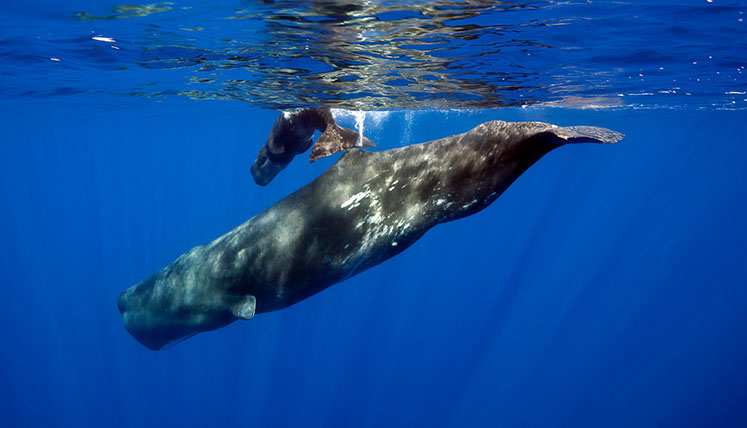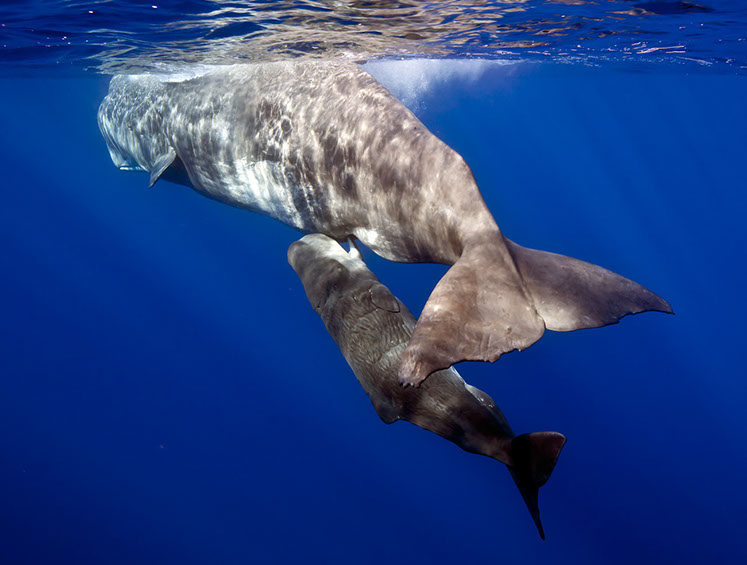



Learning to Dive
The calves swam with short jerky hobby horse motions. They were yet to attain the grace that comes with long practice. They thrust their blowholes well clear of the water to gulp precious air. At this age they have limited dive capacity - a few minutes at best compared with the 45-60 minutes adults typically spend on deep foraging dives to depths of over 2000 metres.
In these three images a calf anxiously follows its mother down on a shallow dive. When the mothers departed on long foraging dives, the three adolescent males acted as baby sitters.
The vertical lines or creases on the calf's side are a legacy of being folded up in its mother's womb.



Time to Suckle? - Not Just Yet
In these three images a thirsty calf tries to suckle as the mother begins to dive. This impatience is understandable, but enthusiasm and inexperience has over-ridden common sense.
Sperm whale suckling has rarely been directly observed or filmed and there has been much conjecture as to the technique needed given their unique lower jaw structure.
An unconfirmed theory has evolved that calves may suckle through their blowholes.
This attempt is unsuccessful as the mother continues with the dive, however this calf is a quick learner and the next series of images reveal the secrets of how sperm whale calves suckle.



Sperm Whale Suckling Secrets Revealed
These two images reveal the secret of sperm whale suckling. Once she was down about ten metres, mum rolled on her back. The calf lay on its side against her belly and opened its jaw. Two mammary slits are located on either side of the genital slit.
The calf was now rewarded with ropey strands of fat-rich milk. Suckling is also a great incentive for stretching breath hold capability as the calf can only feed when its blowhole is submerged.


Sperm Whale Milk
In the top image, a strand of milk can been seen behind the mother's flukes. The calf has stopped suckling and the pair are slowly moving on. The next image shows the ropey texture of the fat-rich milk which doesn't mix readily with the water. Again this gives a clue to suckling behaviour as the expressed milk can be extracted directly from the water.

A sperm whale and calf on the surface

A male sperm whale and calf on the surface